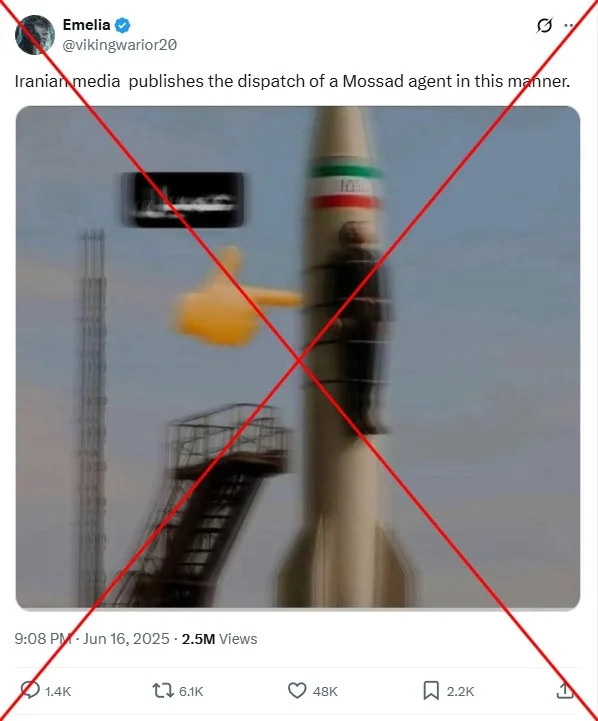
Following the recent arrest of two individuals linked to Israel’s intelligence agency, Iranian media circulated a misleading image purportedly depicting a man strapped to a rocket. This image, shared widely online, falsely implied that it represented Iran’s method of “dispatching” spies. However, analysis indicates that the image was generated using artificial intelligence.
Context of the Claims
The claim gained traction on social media platforms, particularly on X, where it was reposted over 6,000 times. The image features a blurry figure seemingly bound to a rocket, adorned with what appears to be an Iranian flag. This narrative emerged shortly after Iranian authorities reported the arrests on June 15, 2023, amid escalating hostilities between Iran and Israel.
These tensions intensified following Israeli airstrikes on June 13, 2023, which targeted Iranian nuclear facilities and resulted in the deaths of several military officials and nuclear scientists. In retaliation, Iran launched a series of drone and missile attacks, prompting a significant crackdown on suspected spies within the country.
Human Rights Implications
According to the Norway-based NGO Iran Human Rights, the ongoing conflict has led to severe repercussions, including the execution of six individuals on charges of espionage for Israel since the warfare began. Additionally, more than 1,000 people have been arrested on various charges related to the conflict.
The hostilities reached a ceasefire on June 24, 2023, brokered by the United States, resulting in over 1,000 fatalities in Iran and at least 28 deaths in Israel. The impact of these events has reverberated through social media, where similar posts featuring the controversial image appeared across platforms like Facebook and YouTube, in multiple languages.
While some users quickly identified the image as AI-generated, others were convinced of its authenticity. One user remarked, “This is the kind of human animals Israel has to deal with,” while another claimed, “That’s a war crime. Iran deserves everything that they’ll get.”
Debunking the Misrepresentation
Despite the viral nature of the image, there is no credible evidence to support claims of Iran using such extreme measures to deal with spies. A reverse image search revealed a higher-resolution version of the photo on Facebook, where discrepancies were evident, including a distorted Iranian flag and an oddly shaped figure.
Experts note that even with advancements in AI technology, inconsistencies in generated images serve as critical indicators of their inauthenticity. The blurred features and chaotic details of the supposed rocket launch platform further suggest that the image is not a genuine representation of events.
As misinformation continues to spread in the context of the Iran-Israel conflict, credible fact-checking sources like AFP remain vigilant in debunking false claims related to the ongoing war. The public’s engagement with such narratives underscores the importance of critically evaluating the information shared online.







